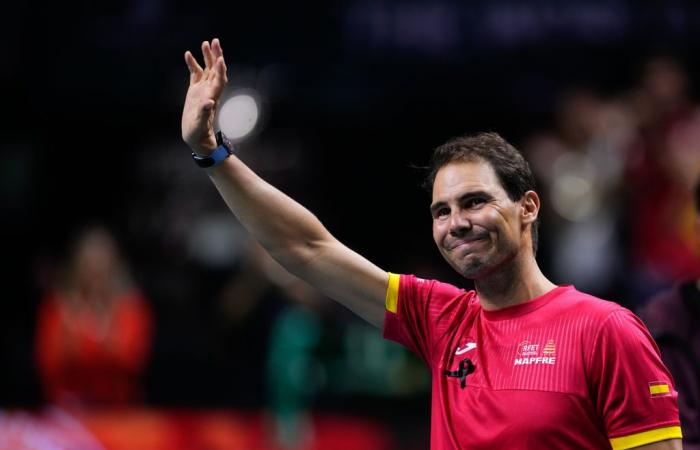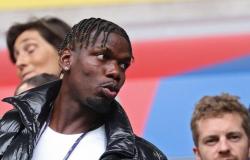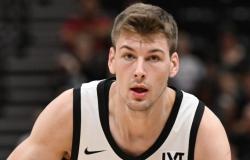
At 38, Rafael Nadal has just retired. However, the Tennis ace can still count on a solid portfolio of investments and sponsorship deals.
Article by Brett Knight for Forbes US
Spain faced the Netherlands in the Davis Cup quarterfinals this week, marking Rafael Nadal's final match as a professional tennis player. Last month, the 38-year-old superstar announced in an emotional video posted on social media that he would retire following the tournament, 19 years after winning his first Grand Slam title and 25 years after signing his first sponsorship deal with Nike.
A successful career
During this long and successful career, Nadal has enjoyed more success than almost all professional tennis players. His 22 Grand Slam singles titles set a men's record, since surpassed by Novak Djokovic, and his $134.9 million career earnings place him second in the ATP Tour earnings rankings, again behind the Serb. Rafael Nadal also earned more than $415 million from sponsorship deals, appearances and other business activities, for a total of more than $550 million in pre-tax income, according to estimates from Forbes.
This leaves him far behind the $1.1 billion that his other great rival, Roger Federer, accumulated during his extraordinary career before retiring in 2022. Furthermore, these earnings put him about the same than Djokovic, who continues to thrive on the circuit at 37 years old. However, no other tennis player and few top athletes come close to the heights reached by the Spaniard. Even Serena Williams, who won 23 Grand Slam singles titles and helped set a new standard for sportswoman compensation before leaving the courts in 2022, finished about $120 million behind Nadal.
“I think he continues to make gains”a tennis agent says of Nadal, who earned about $23 million in extrasporting income over the past year. “He doesn't do anything if he doesn't make a lot of money. There remains Rafa Nadal. »
While he hasn't quite changed the marketing game like Federer (one of seven athletes to have surpassed $1 billion in career earnings) or Serena Williams (who became one of the self-made-women the richest in the United States, with a fortune that Forbes estimated today at $340 million), Rafael Nadal has maintained a strong sponsorship portfolio that is also unusually stable by tennis standards, where players often change brand partners.
In addition to his long relationship with Nike, Nadal has been linked to Kia since 2004, the year before his stunning victory at Roland Garros, and he has played with Babolat racquets since he was nine years old, signing his first international contract with the company in 2001. It bought Richard Mille watches in 2010 and Spanish company Telefónica in 2014. Infosys, Louis Vuitton and Subway are among the more recent additions to a portfolio that includes more than a dozen brands.
“A lot of these contracts were signed while he was injured, and that says a lot about his brand”says Joe Favorito, a longtime marketing consultant and former WTA Tour executive. “No one fled. »
A brand image in Spain and around the world
In the early years, Nadal's somewhat hesitant English may have limited his global appeal, but he began to attract marketers around 2011, when he first crossed the $20 million mark of extra-sporting income after winning four major tournaments in five attempts. “The only thing that Rafa possessed more than anyone else was his emotion, which he did not hide”says Joe Favorito, who also notes that Nadal's fashion sense, right down to the color of his shoes, made him instantly recognizable. Sponsors were particularly attracted to his ongoing battle with Federer, and smaller tournaments were willing to pay each of them more than $1 million in appearance fees just to show up.
“Roger was more of a classic, stylish star, while Rafa was more of a combative rival who sported a tank top and long Mediterranean hair, and I think they suited each other very well”says Stuart Duguid, co-founder of talent agency Evolve, which represents current stars Naomi Osaka and Nick Kyrgios. “I don’t think one person’s career could have happened without the other’s, in many ways. »
And Nadal is on another level in his native Spain. “He’s probably more important than LeBron James in the United States”says Stuart Duguid, who notes that Nadal has benefited from a constant visibility that most of the country's other star athletes, from team sports, have never been able to have. Joe Favorito, who remembers seeing Nadal at a previous Davis Cup meeting in Spain, is even more concise about his place in the country's pantheon: “He is a true god. »
A retirement that promises to be fruitful
Many, if not all, of Nadal's sponsors are expected to continue supporting him during his retirement. He's already shown he can be a good seller when not playing; injuries have limited him to nine tournaments over the past two seasons, including just two of the last eight Grand Slams, and experience of Federer is instructive. The 43-year-old Swiss legend was still earning around $95 million a year when he retired from tennis, and he continues to work with the vast majority of his partners from his days on the courts.
Retirement also has an advantage for marketers. Active players, who work throughout the year in tennis tournaments, usually try to concentrate all their brand engagements into just a few days. Now Nadal has much more time to engage with his partners, if he wishes.
This is an important caveat. Nadal will have to strive to stay in the spotlight, like Tom Brady and David Beckham, or risk becoming the next Pete Sampras, eclipsed by a new generation of tennis greats. Jannik Sinner and Carlos Alcaraz are already laying the foundations for a rivalry that will mark their era, with six Grand Slam titles between them before either has reached the age of 24.
Nadal will also need to maintain his reputation, having made perhaps the first misstep of his career by becoming an ambassador for the Saudi Tennis Federation in January. The contract is expected to earn him several million a year, but his fans, particularly in Spain, have accused him of participating in a sports whitewashing campaign that distracts from the Kingdom's past human rights violations.
An entrepreneurial shift
However, Nadal is also taking his destiny into his own hands through more entrepreneurial activities, taking stakes in companies and launching his own businesses. He recently invested in Playtomic, a startup that helps amateur tennis players book their time on the courts. Furthermore, he is reportedly developing luxury residences on the Costa del Sol, in Spain. He owns an electric boat racing team in the E1 series and Tatel restaurants alongside Pau Gasol and Cristiano Ronaldo, and he partnered last year with Meliá hotels to create a resort brand called Zel.
He also runs a tennis academy in his hometown, Manacor, on the Spanish island of Mallorca, which has won admirers across the sports world and helped train Casper Ruud, now a top 10 mainstay. ATP.
“I don’t think this option is accessible to most athletes. It is in fact reserved for the elite or particularly important athletes”says Stuart Duguid of Nadal's evolving business approach, which places less emphasis on traditional sponsorship deals. “I think he's probably taking inspiration from Kobe and LeBron and others like that who were able to take positions in companies and risks that ended up being ten times or more profitable over time. account. »
A translation by Flora Lucas
Also read: End clap for Rafael Nadal: retirement planned for November for the world tennis legend





